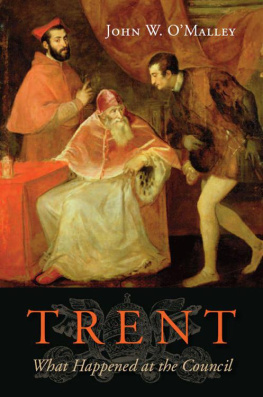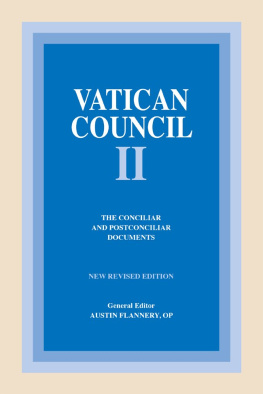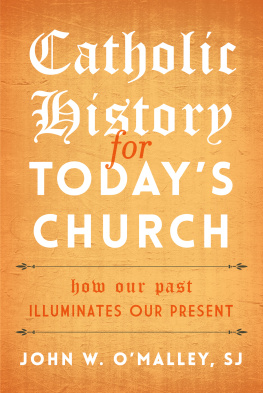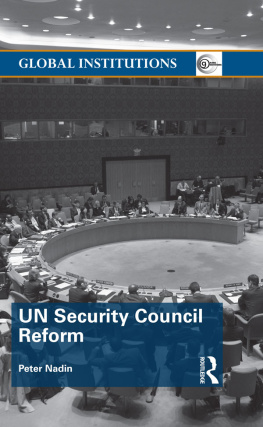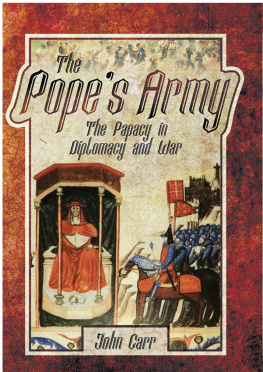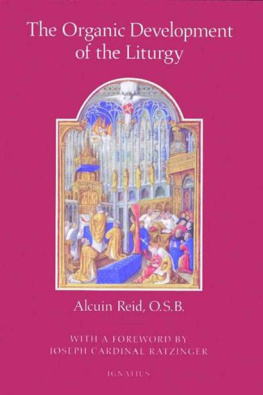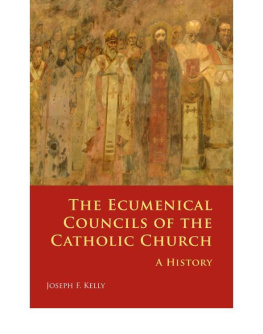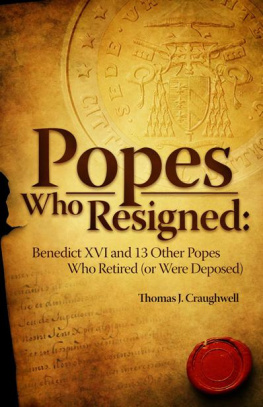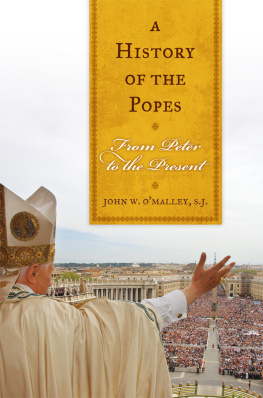T RENT
T RENT
What Happened at the Council
JOHN W. OMALLEY
THE BELKNAP PRESS OF HARVARD UNIVERSITY PRESS
Cambridge, Massachusetts
London, England
2013
Copyright 2013 by the President and Fellows of Harvard College
All rights reserved
Jacket art: Titian, Pope Paul III and Nephews, courtesy of Bridgeman Art Library.
Jacket design: Annamarie McMahon Why
Library of Congress Cataloging-in-Publication Data
OMalley, John W.
Trent : what happened at the council / John W. OMalley.
p. cm.
Includes bibliographical references (p. ) and index.
ISBN 978-0-674-06697-7 (alk. paper)
1. Council of Trent (15451563). I. Title.
BX8301545 .043 2013
262.52dc23 2012023978
For Clare OReilly
With gratitude to Giles of Viterbo, who, long dead though he was, introduced Clare and me to each other on Achill Island a half-century ago
History with its flickering lamp stumbles along the trail of the past, trying to reconstruct its scenes, to revive its echoes, and to kindle with pale gleams the passions of former days.
Winston Churchill, eulogy for Neville Chamberlain
November 12, 1940
Contents
Trent rings a bell, but faint and muffled is the sound. A church council? Against Luther and the Protestants? For many the bell tolls ominously, intimating regression, repression, and the dreaded Counter Reformation. Even for Roman Catholics the bell rings with distant sound and indistinct tone: some stoutly maintain that Trent was the council that wrought all the bad things from which Vatican Council II saved them in the twentieth century, others that Trent created all the good things of which Vatican II then robbed them. Such are the prevailing clichs about the council. Yet even the clichs suggest that Trent, whatever it was, was important. In fact, anyone with the slightest interest in the cultural and religious history of early modern Europe has heard of it and been indoctrinated, subtly or not so subtly, into either a positive or a negative assessment.
Trent was indeed a church council that met, not surprisingly, in the city of Trent, located in the Adige River valley just south of the Dolomite Mountains, on the route to the Brenner Pass. It was much closer to Innsbruck than to Rome. The city, although in present-day Italy, owed its political allegiance to the Count of Tyrol, a title held from 1519 to 1521 by the Holy Roman Emperor, Charles V, and after that by his brother, Ferdinand. It was more immediately subject to the overlord-ship of the local bishop. Trent hosted the council in three distinct periods that stretched over eighteen years15451547, 15511552, and 15621563. The name of the city in Latin is Tridentinum, hence the English adjective Tridentine.
At the time of the council Trent was incomparably smaller than todays lively metropolis. It counted only about seven or eight thousand inhabitants, of which almost all were Italian-speaking. Trents winters were long and severe, its summers often heavy and hot, a great trial (not to mention a health threat) for those at the council used to more temperate climes and less dramatic shifts in temperature. The curious bedfellows of tedium and tension also took their toll on the physical well-being and emotional equilibrium of the councils participants.
As the number of prelates attending the council grew, the problem of providing food and lodging in this small city grew accordingly. Lodging became especially difficult because rooms had to be found not only for the bishops but also for their sometimes large retinues, which in a few cases might mean 20 to 30 persons or even many more. The entourage of Cardinal Ercole Gonzaga, the principal papal legate for the last period of the council, comprised 160 persons, and that of Cardinal Charles de Guise, 80.
Provision also had to be made for the theologians advising the bishops, who at times outnumbered them, for occasional princely visitors, and of course for the orators (envoys or ambassadors) of the great rulers, who certainly did not come unaccompanied. During the last period, for instance, the envoy of the Portuguese crown had an entourage of 80. By that time the council swelled the towns population by well over 2,000 people. Besides providing food and lodging for all these visitors, the town also had to find fodder for the horses on which they arrived, which itself became a major problem.

FIGURE 1 Map of Italy showing major cities and indicating the distance between Rome and Trent.
Somehow the town managed to accommodate these numbers, but with great difficulty, inconvenience, discomfort, and grumbling on the part of all concerned. Prices skyrocketed. There were other problems. Unlike today, the city was then a cultural backwater, which meant it did not possess the library resources adequate for a gathering such as the council, which had to cope with such serious historical and theological issues.
In comparison with the other problems besetting the council, however, these were almost negligible. The others were so many and so great that it seems a miracle the council ever happened at all and was finally brought to conclusion. War, the threat of war, and the seemingly inexorable onslaught against Christendoms eastern frontier by the forces of the Ottoman Turks, the infidel, made the council a perilous enterprise. Even during cease-fires the rivalries among the great rulers and the high stakes the council held for them obstructed the councils attempts to move forward on its business.
These extraordinary circumstances meant that, compared with other councils, attendance by bishops was until the third period notably small. Although in the mid-sixteenth century the Catholic episcopate numbered close to 700 members, the council opened with only 29 prelates. The second period, 15511552, opened with only 15. In neither of these periods did the number ever reach 100.
The council attained its peak membership during the third period, 15621563, when by the second year around 200 were steadily present. During the summer of that year, the number rose for a short time to as high as 280not a mean achievement, given the troubled times. Most bishops who came to one of the periods of the council stayed for its duration, but others arrived, stayed a while, and then departedmaybe to return, maybe not. A decade and a half separated the opening of the first period from the opening of the third, which meant very few prelates present at the former were alive or well enough to participate in the latter.
The long span between the beginning and the end of the council resulted in an extraordinarily large cast of participants, making it difficult to keep track even of the major personalities. The three popes who convoked the three periods (Paul III, Julius III, and Pius IV), the two emperors (Charles V and Ferdinand I), and the two kings of France (Francis I and Henry II) emerge, of course, with clarity, as does, in the last period, the king of Spain, Philip II. The more important papal legates also emerge clearlyGiovanni Maria Del Monte and Marcello Cervini for the first period, Marcello Crescenzio for the second, and Ercole Gonzaga, Girolamo Seripando, Ludovico Simonetta, and especially Giovanni Morone for the third.
But there were other important players, including three who had the rare experience of participating in all three periodsSeripando, the theologically skilled superior general of the Augustinian order for the first two periods and, as mentioned, papal legate for the third; the Jesuit Diego Lanez, who served as a papal theologian for the first two and who appeared as superior general of his order at the third; and Alfonso Salmern, also a Jesuit, papal theologian for all three.
Next page
